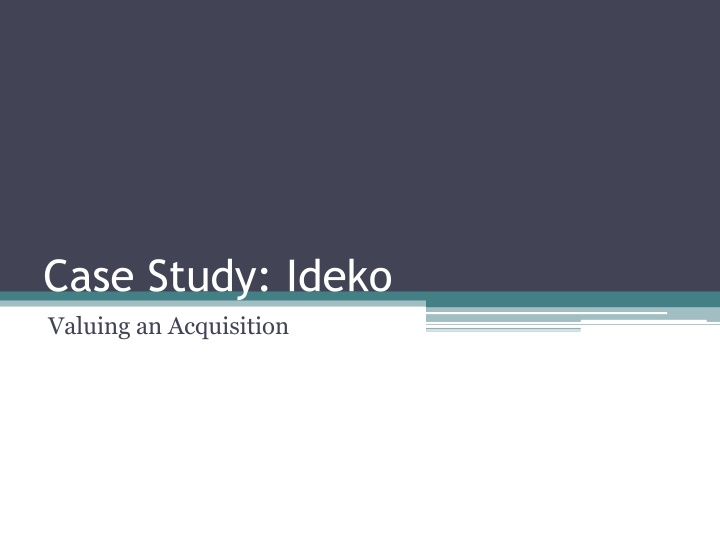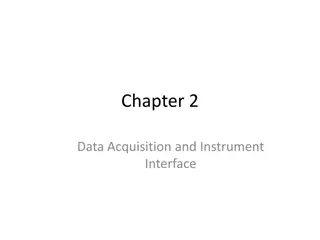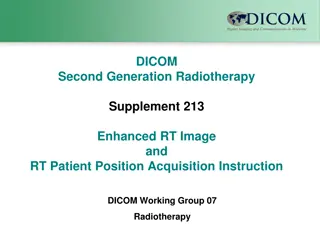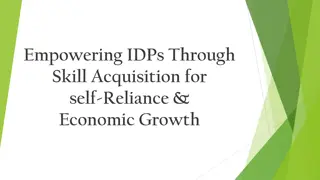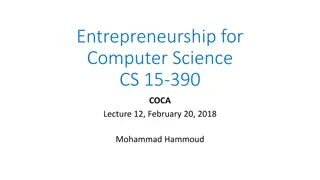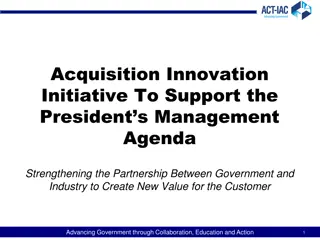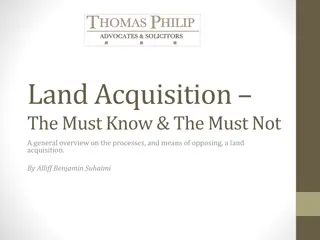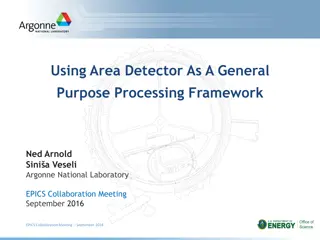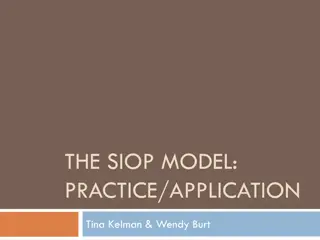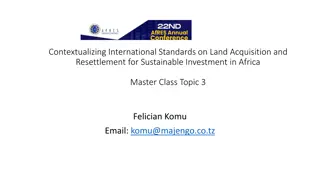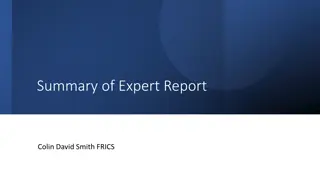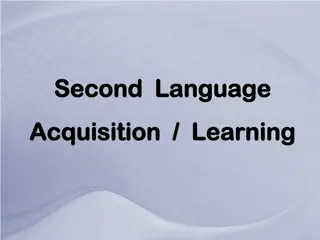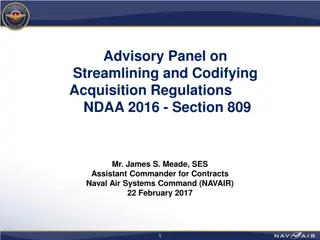Evaluating Ideko Acquisition and Growth Strategies
KKP Investments is considering acquiring Ideko Corporation and implementing operational and financial improvements to maximize value. The acquisition price of $150 million seems reasonable based on financial ratios. By focusing on operational enhancements such as cost-cutting, product development, and marketing, Ideko aims to increase market share and revenue over the next five years. Capital expenditure for a major expansion in 2008 will be crucial. Working capital management improvements are also necessary to align with industry standards.
Download Presentation

Please find below an Image/Link to download the presentation.
The content on the website is provided AS IS for your information and personal use only. It may not be sold, licensed, or shared on other websites without obtaining consent from the author.If you encounter any issues during the download, it is possible that the publisher has removed the file from their server.
You are allowed to download the files provided on this website for personal or commercial use, subject to the condition that they are used lawfully. All files are the property of their respective owners.
The content on the website is provided AS IS for your information and personal use only. It may not be sold, licensed, or shared on other websites without obtaining consent from the author.
E N D
Presentation Transcript
Case Study: Ideko Valuing an Acquisition
Valuation Using Comparables Consider Ideko Corporation, a privately held firm. The owner has decided to sell the business. Your job, as a partner in KKP Investments, is to evaluate purchasing the company, implementing operational and financial improvements, and selling the business at the end of five years.
Valuation Using Comparables A price of $150 million for Ideko s equity has been suggested. The data in the previous slide provides some reassurance that this acquisition price is reasonable as the ratios are about the level of or better than the industry averages. However, to assess whether this investment is attractive, the operational aspects of the firm and the ultimate cash flows the deal is expected to generate need to be analyzed.
The Business Plan Operational Improvements By cutting administrative costs immediately and redirecting resources to new product development, sales, and marketing, you believe Ideko can increase its market share from 10% to 15% over the next five years. The increased sales demand can be met in the short run using the existing production lines. Once the growth in volume exceeds 50%, however, Ideko will need to undertake a major expansion to increase its manufacturing capacity. Furthermore: Ideko s average selling price is forecast to increase 2% each year. Raw materials prices are forecast to increase at a 1% rate. Labor costs are forecast to increase at a 4% rate.
Capital Expenditures: A Needed Expansion In 2008, a major expansion will be necessary, leading to a large increase in capital expenditures in 2008 and 2009. Appropriate tax depreciation is also shown.
Working Capital Management Ideko s Accounts Receivable Days is: Accounts Receivable ($) Sales Revenue ($ / yr) 18,493 365 days 75,000 = Accounts Receivable Days 365 days/yr = = 90 days While the industry average is 60 days You believe that Ideko can tighten its credit policy to achieve the industry average without sacrificing sales.
Working Capital Management Ideko s inventory figure on its balance sheet includes $2 million of raw materials. Given raw material expenditures of $16 million for the year, Ideko currently holds 45.6 days worth of raw material inventory. (2 16) 365 = 45.6 You believe that, with tighter controls of the production process, 30 days worth of inventory will be adequate.
Capital Structure Changes: Levering Up You believe Ideko is significantly underleveraged so you plan to increase the firm s debt. The debt will have an interest rate of 6.8% and Ideko will only pay interest during the next five years. The firm will also seek additional debt financing in 2008 and 2009 associated with the expansion.
Capital Structure Changes: Levering Up The forecasted interest expense each year is computed as: Interest in Year Interest Rate t = Ending Balance in Year ( 1) t Therefore:
Capital Structure Changes: Levering Up In addition to the $150 million purchase price for Ideko s equity, $4.5 million will be used to repay Ideko s existing debt. With $5 million in transaction fees, the acquisition will require $159.5 million in total funds. KKP s sources of funds include the new loan of $100 million as well as Ideko s own excess cash ($6.5 million, which KKP will have access to). Thus KKP s required equity contribution to the transaction is $53 million.
Building the Financial Model Forecasting Earnings To build the pro forma income statement, begin with Ideko s sales. Each year, sales can be calculated as: = Sales Market Size Market Share Average Sales Price The raw materials cost (similarly for direct labor cost) can be calculated from sales as: = Raw Materials Market Size Market Share Raw Materials per Unit
Building the Financial Model Forecasting Earnings Sales and marketing and administrative costs can be computed directly as a percentage of sales. = Sales and Marketing Sales (Sales and Marketing % of Sales) The corporate income tax is computed as: = Income Tax Pretax Income Tax Rate
Working Capital Requirements The working capital forecast should include the plans to tighten Ideko s credit policy, speed up customer payments, and reduce Ideko s inventory of raw materials. Accounts Receivable in 2006 is calculated as: Annual Sales 365 days/yr = Accounts Receivable Days Required $88.358 million/yr 365 days/yr = = 60 days $14.525 million
Working Capital Requirements In order to capture the improvements in inventory management you want to reflect the change from 45.6 days of expenditures on raw materials in raw materials inventory to 30 days. Raw Materials Inventory in 2006 is calculated as: Raw Materials Expense 365 days/yr $18.665 million/yr 365 days/yr = Raw Materials Inventory Days Required = = 30 days $1.534 million
Working Capital Requirements The minimum cash balance is the minimum level of cash needed to keep the business running. Firms typically earn little or no interest on these balances. As a consequence, the opportunity cost of holding cash is accounted for by including the minimal cash balance as part of the firm s working capital. Assume this is held at the current 30 days sales.
Unlevered Betas Equity Value Enterprise Value Net Debt Value Enterprise Value = + U E D
Idekos Unlevered Cost of Capital The data from the comparable firms provides guidance for estimating Ideko s unlevered cost of capital. Ideko s products are not as high end as Oakley s eyewear, so Ideko s sales are unlikely to vary as much with the business cycle as Oakley s sales do. Ideko does not have a prescription eyewear division, as Luxottica does. Ideko s products are fashion items rather than exercise items.
Idekos Unlevered Cost of Capital Given the above analysis, Ideko s cost of capital is likely to be closer to Oakley s than to Nike s or Luxottica s. You decide to use 1.20 as your preliminary estimate for Ideko s unlevered beta. Your estimate of Ideko s unlevered cost of capital is: ( [ ] U f U mkt r r E R = + = = + ) f r 4% 1.20(5%) 10%
Valuing the Investment The Multiples Approach to Continuation Value Practitioners generally estimate a firm s continuation value (also called the terminal value) at the end of the forecast horizon using a valuation multiple, with the EBITDA multiple being the multiple most often used in practice. = Continuation Enterprise Value at Forecast Horizon EBITDA at Horizon EBITDA Multiple at Horizon
Continuation Multiples One difficulty with relying on comparables when forecasting a continuation value is that future multiples of the firm are being compared with current multiples of its competitors.
The Discounted Cash Flow Approach to Continuation Value The enterprise value in year T, using the WACC valuation method, is calculated as: FCF = = L 1 + Enterprise Value in Year T V T T wacc r g Free cash flow in year T + 1 is computed as: = + Unlevered Net Income Increases in NWC Depreciation Capital Expenditures FCF 1 + + 1 + 1 T T T 1 + 1 + T T
The Discounted Cash Flow Approach to Continuation Value If firm s sales are expected to grow at a nominal rate g and the firm s operating expenses remain a fixed percentage of sales, then its unlevered net income will also grow at rate g. Similarly, the firm s receivables, payables, and other elements of net working capital will grow at rate g.
The Discounted Cash Flow Approach to Continuation Value If capital expenditures are defined as (so net fixed assets also grow at a rate g): = + Capital Expenditures Depreciation g Net Fixed Assets 1 + 1 + T T T Then free cash flows at time t+1, given g, can be estimated as: = + F (1 ) g Unlevered Net Income Net Fixed Assets g g Net Working Capital CF 1 + T T T T
The Discounted Cash Flow Approach to Continuation Value The projected EBITDA multiple of 9.1 can be justified according to the discounted cash flow method with a nominal long-term growth rate of about 5.3%. Given an inflation rate of 2%, this nominal rate represents a real growth rate of about 3.3%. If this implied growth rate is much higher than the expectations of long-run growth for the industry as a whole, you should be very skeptical of the estimate being used.
APV Valuation of Ideko Equity The estimate of Ideko s continuation value can be combined with the forecasts for free cash flow through 2010 to estimate Ideko s value today. The first step is to compute Ideko s unlevered value. 1 U r + + U FCF V = U t t V 1 t Next, the present value of the interest tax shields needs to be computed. Interest Tax Shield 1 D r + + s T = s t t T 1 t
APV Estimate of Value Given that KKP s initial cost to acquire Ideko s equity is $53 million, the deal looks attractive with an NPV $60 million. $113 million $53 million = $60 million
